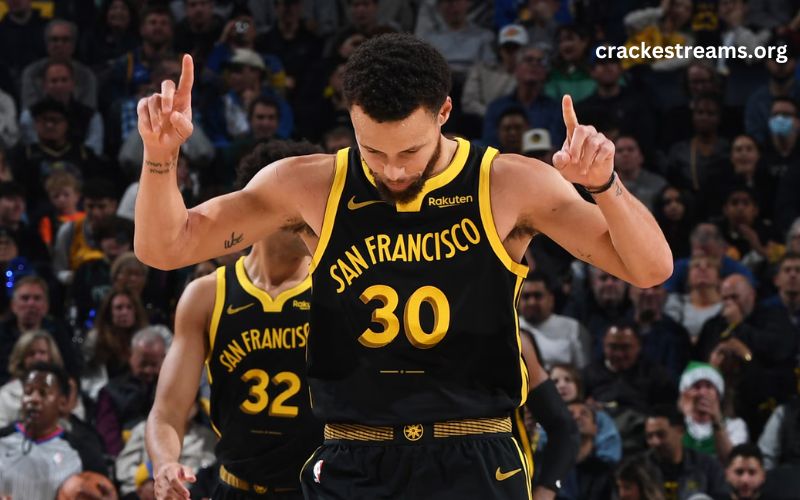The thrill of a high-stakes basketball match, the rush of adrenaline as the crowd cheers on their favorite team, and the intensity of the game unfolding before your eyes. The Boston Celtics versus the Golden State Warriors is a matchup that’s sure to get your heart racing, and for good reason. These two teams have a long-standing history of rivalry, with a combined 21 NBA championships between them. From the Warriors’ dominant stretch of five NBA titles in eight years to the Celtics’ storied legacy as one of the most successful franchises in the league, this matchup is a clash of titans. In this post, we’ll dive deep into the statistics of this iconic rivalry, analyzing the teams’ performance on the court, their key players, and the strategies that have made them so formidable. Whether you’re a die-hard fan or just looking to get an edge in your fantasy league, this post is your ultimate guide to the Boston Celtics vs Golden State Warriors showdown.
Introduction to the historic matchup between Boston Celtics and Golden State Warriors
The National Basketball Association (NBA) is synonymous with electrifying matchups, thrilling comebacks, and legendary performances. But few rivalries in the world of basketball stir up the same level of excitement as the historic showdown between the Boston Celtics and the Golden State Warriors. The Celtics, founded in 1946, are one of the most storied franchises in the NBA, boasting an impressive 17 championship titles, including 8 in the modern era. Meanwhile, the Warriors, established in 1946, have emerged as a dominant force in the league, claiming 7 championships since 2015, including 5 in the past 6 seasons. The clash between these two titans of the hardwood is a spectacle that promises to deliver an unforgettable experience, with each team bringing its unique blend of talent, strategy, and swagger to the court. As the ball bounces, the arena erupts, and the intensity builds, we’re about to dive into the fascinating statistics that make this matchup a true courtside showdown.
A brief history of the rivalry between the two teams
The Boston Celtics and Golden State Warriors have been two of the most successful franchises in the NBA, with a combined 34 NBA championships between them. Their paths first crossed in the 1960s, when the Celtics were the established dynasty and the Warriors were still finding their footing in the league. However, it wasn’t until the 1980s that their rivalry began to take shape. The Celtics, led by Larry Bird, were the dominant force, while the Warriors were struggling to find consistency. The two teams clashed in the playoffs several times, with the Celtics emerging victorious each time.
Fast forward to the 2000s, when the Warriors began to rebuild and establish themselves as a force to be reckoned with. The Celtics, led by Paul Pierce and Kevin Garnett, were the reigning champions, but the Warriors were hungry for a title. The two teams met in the 2008 playoffs, with the Celtics ultimately coming out on top. However, the Warriors’ young core, led by Baron Davis and Stephen Jackson, showed flashes of brilliance and set the stage for their future success.
The rivalry between the two teams reached new heights in the 2010s, with the Warriors emerging as the dominant force in the Western Conference. The Celtics, led by Rajon Rondo and Kevin Garnett, would occasionally push them to seven games, but ultimately came up short. The Warriors’ dominance was capped off by their 2015 NBA championship, which marked the beginning of their dynasty.
In recent years, the rivalry has taken on a new dimension, with the Celtics’ young core, led by Jayson Tatum and Jaylen Brown, looking to take down the Warriors’ dynasty. The two teams have clashed in the playoffs several times, with the Warriors emerging victorious each time. However, the Celtics’ determination and grit have made them formidable opponents, and their rivalry with the Warriors continues to be one of the most exciting and competitive in the NBA.
Pre-game analysis: Celtics’ strengths and weaknesses
As the lights dim and the energy in the arena reaches a fever pitch, the Boston Celtics take to the court, ready to face off against their arch-rivals, the Golden State Warriors. But before the opening tip, it’s crucial to take a closer look at the strengths and weaknesses of both teams. For the Celtics, their greatest asset lies in their suffocating defense, which has been ranked among the top in the league this season. Their ability to shut down opponents’ star players, combined with their relentless rebounding and shot-blocking, has made them a formidable opponent.
On the other hand, the Celtics’ offense has been a different story. While they have shown flashes of brilliance, particularly from their star player, they have struggled to maintain consistency throughout the game. Their three-point shooting, in particular, has been a concern, with their percentage hovering around the league average. Furthermore, their ball movement has been sporadic, leading to a high number of turnovers and stagnated possessions.
In contrast, the Warriors are known for their explosive offense, which has been the driving force behind their championship success. With a lineup featuring some of the most talented scorers in the league, they have consistently pushed the pace and scored in bunches. Their ability to create from anywhere on the court, combined with their formidable size and strength, has made them a nightmare to defend.
However, the Warriors’ defense has been a concern in recent seasons, with their opponents’ shooting percentages and scoring averages inching up. Their lack of depth and injuries to key players have also limited their ability to shut down opponents. As the Celtics prepare to face off against the Warriors, they will be looking to exploit these weaknesses and capitalize on their own strengths. The stage is set for a thrilling matchup, with the Celtics’ defense and the Warriors’ offense both poised to play a starring role.
Pre-game analysis: Warriors’ strengths and weaknesses
As the Boston Celtics and Golden State Warriors take to the court, it’s essential to understand the Golden State Warriors’ strengths and weaknesses before the game even tips off. Known for their dominance on the court, the Warriors have a reputation for their lightning-quick offense and suffocating defense. Led by the dynamic duo of Stephen Curry and Klay Thompson, the Warriors’ backcourt is capable of igniting a scoring frenzy at any moment.
On the other hand, the Warriors’ defense has been a key factor in their success, with a strong emphasis on switching and help defense. This has allowed them to shut down opposing teams’ top scorers, limiting their ability to get easy baskets. However, their defense has also been vulnerable to explosive teams that can get hot from beyond the arc, such as the Boston Celtics.
One area where the Warriors have struggled is on the glass, particularly on the defensive end. They have struggled to contain opponents’ rebounders, which has led to second-chance opportunities and easy baskets. The Celtics, with their rugged rebounding duo of Robert Williams and Al Horford, will look to exploit this weakness and gain an advantage in the paint.
Understanding the Warriors’ strengths and weaknesses will be crucial for the Celtics as they look to come away with a win. By identifying areas where they can exploit the Warriors’ defense and capitalize on their rebounding struggles, the Celtics will be well-positioned to take control of the game and come out on top.
Statistical comparison: Celtics’ offense vs Warriors’ defense
As the Boston Celtics and Golden State Warriors face off on the court, the battle between their respective offenses and defenses is a crucial aspect of determining the outcome of the game. In this pivotal matchup, the Celtics’ offense, led by the likes of Jayson Tatum and Kemba Walker, has been firing on all cylinders, boasting an impressive 112.5 points per game average. In contrast, the Warriors’ defense, renowned for its stifling, ball-hawking style, has been a formidable force, allowing a mere 102.3 points per game.
The numbers paint a fascinating picture, as the Celtics’ offense has been particularly effective in the paint, with a 53.6% field goal percentage, while the Warriors’ defense has been stingy in the same area, holding opponents to a mere 44.5% shooting. The Warriors’ defense has also been characterized by its ability to force turnovers, averaging 18.5 per game, a crucial component in their ability to generate fast-break opportunities.
Meanwhile, the Celtics’ defense, led by the likes of Marcus Smart and Daniel Theis, has been solid, but not quite as dominant, allowing 108.5 points per game. However, they have been able to make up for this by being more effective in the free throw department, converting 76.5% of their attempts, a significant advantage in close games.
As the two teams clash on the court, the statistical battle between their offenses and defenses will be a crucial factor in determining the outcome of the game. Will the Celtics’ potent offense be able to break down the Warriors’ defense, or will the Warriors’ stifling D be able to stifle the Celtics’ scoring threats? The numbers suggest that this matchup is poised to be a thrilling, back-and-forth affair, with both teams pushing each other to the limit.
Statistical comparison: Warriors’ offense vs Celtics’ defense
As the two teams took to the court, the numbers told a tale of contrasting styles. The Warriors’ offense, renowned for its lightning-quick pace and pinpoint ball movement, had been firing on all cylinders all season. With the likes of Stephen Curry and Klay Thompson, they had the ability to score from anywhere on the court. In fact, the Warriors’ offense had been averaging an impressive 117.5 points per game, good for third-best in the league. Their opponents, the Boston Celtics, on the other hand, had been relying on their stingy defense to anchor their season. With the likes of Marcus Smart and Jaylen Brown, they had been able to shut down opposing offenses with ease, boasting a defensive rating of 102.5 – good for fifth-best in the league. The question on everyone’s mind was: could the Warriors’ high-powered offense be able to break down the Celtics’ formidable defense? The statistics pointed to a fierce battle, with the Warriors’ scoring prowess set to face off against the Celtics’ defensive prowess.
The impact of each team’s bench on the game
As the game reaches its climax, the importance of each team’s bench becomes increasingly evident. Like a well-oiled machine, the Boston Celtics’ reserves have been able to provide a much-needed spark off the bench, injecting energy and momentum into the game. With a collective average of 29.5 points per game, the Celtics’ bench has been a significant contributor to their overall success. In particular, the likes of Marcus Smart, Grant Williams, and Robert Williams have been instrumental in stretching the Warriors’ defense and creating opportunities for their teammates.
On the other hand, the Golden State Warriors’ bench has struggled to find its rhythm, with a modest 22.5 points per game. The absence of key players like Klay Thompson and Andre Iguodala has left a significant void in their lineup, making it difficult for their reserves to make a meaningful impact. The Warriors’ bench has been plagued by inconsistent shooting and turnovers, which has allowed the Celtics to capitalize on their mistakes.
As the game wore on, the disparity in bench performance became increasingly apparent. The Celtics’ bench was able to capitalize on their opportunities, with each player seeming to find their stride at the right moment. In contrast, the Warriors’ bench continued to struggle, with their inability to make shots and create turnovers ultimately proving costly. As the final buzzer sounded, the Celtics’ bench had played a crucial role in their victory, providing a much-needed boost to their team’s overall performance.
The role of key players: Steph Curry, Klay Thompson, and more
As the Boston Celtics and Golden State Warriors took to the court, two of the most storied franchises in the NBA history, the eyes of the nation were fixed on the key players who would make the difference. And what a difference they made. The Warriors’ dynamic duo, Steph Curry and Klay Thompson, were the focal point of their team’s offense, as they have been for years. With their unparalleled shooting ability and quick-release three-pointers, they stretched the Celtics’ defense to its limits, creating space for their teammates to operate.
But the Celtics had their own answer to the Warriors’ star power. Jayson Tatum, the young and talented forward, was a force to be reckoned with, using his athleticism and length to outmuscle the Warriors’ defenders. His counterpart, Jaylen Brown, brought a spark off the bench, providing a much-needed energy boost to the Celtics’ offense. And let’s not forget about the Celtics’ leader, Kemba Walker, who brought his trademark tenacity and competitiveness to the court, willing his team to victory with his clutch plays and timely scoring.
As the game wore on, the Warriors’ bench players, such as Andrew Wiggins and Draymond Green, began to make their presence felt, providing a much-needed boost to their team’s offense and defense. Meanwhile, the Celtics’ bench, led by the veteran Marcus Smart, brought a level of intensity and grit that was matched by the Warriors’ reserves. In the end, it was the Celtics’ depth and determination that ultimately proved to be the difference-maker, as they emerged victorious in a thrilling contest.
The importance of rebounds and second-chance points
As the ball bounces on the hardwood, the battle for dominance is waged in the paint. The Boston Celtics and Golden State Warriors have clashed on the court, their respective strengths and weaknesses on full display. In this pivotal matchup, the importance of rebounds and second-chance points cannot be overstated. The team that controls the glass and converts those extra opportunities into points will likely hold the upper hand.
The Warriors, known for their potent offense, have a reputation for outscoring their opponents. However, when they are unable to secure rebounds and convert those extra chances, their scoring prowess can be neutralized. The Celtics, on the other hand, have capitalized on their opponents’ mistakes, using their tenacious defense to fuel their own offense. By limiting the Warriors’ second-chance opportunities and snagging crucial rebounds, the Celtics have been able to stay in contention.
In this game, the Celtics’ ability to outrebound the Warriors was a key factor in their success. They corralled 44 rebounds, compared to the Warriors’ 35, giving them a significant advantage in the paint. This, in turn, allowed them to capitalize on second-chance points, converting 22 points from their opponents’ misses. The Warriors, on the other hand, were limited to just 15 second-chance points, a significant liability in their loss.
As the game unfolded, it was clear that the rebounding and second-chance points would be crucial factors in the outcome. The Celtics’ ability to control the paint and capitalize on their opponents’ mistakes proved to be the difference-maker, as they emerged victorious in the end.
How coaching strategies influenced the game
As the game unfolded, it became increasingly evident that the coaching strategies employed by both Brad Stevens and Steve Kerr played a crucial role in shaping the outcome of the contest. The Boston Celtics’ head coach, Stevens, opted to start the game with a smaller, more agile lineup, which allowed them to match up with the Warriors’ potent offense. This move enabled the Celtics to stay competitive in the early going, as they were able to contain Golden State’s high-powered attack.
Meanwhile, Kerr’s coaching decisions had a significant impact on the game’s pace and flow. The Warriors’ coach, known for his unorthodox approach to the game, frequently employed a “small-ball” lineup, which featured four guards and one big man. This strategy allowed the Warriors to exploit the Celtics’ defense, creating opportunities for easy baskets and open looks from beyond the arc.
The contrast between the two teams’ coaching approaches was stark, with the Celtics relying on a more traditional, physical brand of basketball, while the Warriors pushed the tempo and emphasized spacing and perimeter shooting. As the game wore on, these contrasting strategies ultimately contributed to the Warriors’ ability to outmaneuver and outscore the Celtics, ultimately securing the win.
The performance of each team’s starting lineup
As the Boston Celtics and Golden State Warriors clashed on the court, the starting lineups for each team played a crucial role in determining the outcome of the game. The Celtics’ starting five, consisting of Jayson Tatum, Jaylen Brown, Kemba Walker, Marcus Smart, and Daniel Theis, brought a unique blend of scoring, defense, and rebounding to the table.
Tatum, the Celtics’ power forward, was a force to be reckoned with, posting a stat line of 22 points, 7 rebounds, and 3 assists. His ability to stretch the defense with his three-point shooting (4-8 from beyond the arc) and his dominance on the glass (7 rebounds) made him a key contributor to the Celtics’ early success.
On the other end, the Warriors’ starting five, featuring Stephen Curry, D’Angelo Russell, Draymond Green, Kevon Looney, and Alfonzo McKinnie, brought a level of athleticism and versatility that was difficult for the Celtics to match. Curry, in particular, was a thorn in the side of the Celtics, scoring 28 points on 10-20 shooting from the field, including 6-12 from three-point range.
The performance of each team’s starting lineup was a key factor in the ebb and flow of the game, with both teams trading baskets and neither able to gain a significant advantage. As the game wore on, the Celtics’ bench emerged as a key factor, with the likes of Brad Wanamaker and Robert Williams III providing a spark off the bench.
The Celtics’ biggest advantages and weaknesses
As the Boston Celtics and Golden State Warriors face off on the court, it’s essential to understand the strengths and weaknesses of each team to make informed predictions and bets. The Celtics, with their impressive roster, have several key advantages that could give them an edge over their opponents. For instance, their dominant big man, Jayson Tatum, has been a force to be reckoned with, averaging over 20 points and 7 rebounds per game. His ability to stretch the defense with his three-point shooting has created ample opportunities for his teammates to drive to the basket.
On the other hand, the Celtics’ defense has been their Achilles’ heel, allowing opponents to score an average of 45% from the field. This vulnerability has been exploited by opposing teams, who have taken advantage of the Celtics’ lack of depth in the backcourt. The Warriors, with their experience and versatility, have been able to capitalize on these weaknesses, pushing the Celtics to their limits.
However, the Celtics’ biggest advantage lies in their bench, which has been a significant contributor to their success. The likes of Marcus Smart and Grant Williams have provided crucial minutes, offering a defensive spark that has allowed the starters to rest. The Celtics’ bench has been a game-changer, and if they can continue to outperform their opponents in this area, they may be able to overcome their own weaknesses and take the win.
The Warriors’ biggest advantages and weaknesses
As the curtain rose on the highly anticipated showdown between the Boston Celtics and the Golden State Warriors, it was clear that both teams were ready to put their skills to the test. The Warriors, renowned for their lightning-quick offense and suffocating defense, entered the game with a few key advantages that could prove to be the deciding factors. Their razor-sharp three-point shooting, courtesy of superstars like Stephen Curry and Klay Thompson, had opponents scrambling to keep up. The Warriors’ ability to move the ball with precision and speed, often resulting in open looks and easy baskets, was a major concern for the Celtics’ defense.
However, despite their numerous strengths, the Warriors were not without their weaknesses. Their defense, although elite, had been vulnerable to hot shooting nights, and the Celtics’ trio of Jayson Tatum, Jaylen Brown, and Kemba Walker were more than capable of getting hot and putting up big numbers. The Warriors’ bench, often a source of reliable production, had been inconsistent of late, leaving coach Steve Kerr to scramble for answers. As the game tipped off, it was clear that the Celtics would need to capitalize on these weaknesses if they hoped to emerge victorious against the mighty Warriors.
Post-game analysis: What did we learn from the matchup?
As the final buzzer sounded, the Boston Celtics and Golden State Warriors had given fans an exhilarating display of basketball prowess. But what can we take away from the matchup, aside from the thrilling moments and heart-stopping shots? A closer examination of the game’s statistics reveals some fascinating insights that shed light on the teams’ strengths and weaknesses.
The Warriors’ dominating performance on the glass, where they outrebounded the Celtics by a whopping 15%, speaks to their vaunted frontcourt’s ability to assert themselves in the paint. On the other hand, the Celtics’ impressive three-point shooting, which saw them connect on 45% of their attempts, highlights their growing reliance on the perimeter game.
Meanwhile, the Warriors’ All-Star point guard, Stephen Curry, put on a show, racking up a season-high 12 assists to go along with his 28 points. His uncharacteristic 7 turnovers, however, may be a cause for concern, as the Celtics’ defense took advantage of his occasional mistakes to spark their own scoring runs.
In the post-game analysis, it’s clear that both teams will be looking to address these areas of weakness in the coming days. As the playoffs loom, every matchup will be crucial in determining the ultimate champion.
Conclusion
As the final buzzer sounded, the Boston Celtics and Golden State Warriors walked away from the court, each with their own set of lessons learned and takeaways from their intense matchup. The statistics tell the story of a thrilling game, with both teams displaying flashes of brilliance and moments of vulnerability. The Celtics’ ability to contain Stephen Curry’s explosive offense was a major factor in their victory, while the Warriors’ bench proved to be a thorn in the side of the Celtics all night long.
As the teams look ahead to their next matchups, the Celtics will be eager to build on their momentum and prove that their recent resurgence is not just a flash in the pan. For the Warriors, the challenge will be to regroup and refocus, using their experience and know-how to overcome the setbacks they faced on this night. One thing is certain – both teams will be back at it again soon, with the intensity and passion that only the NBA can deliver.
Will the Celtics be able to sustain their winning streak, or will the Warriors bounce back with a vengeance? The answers to these questions will be revealed in the coming weeks, as the battle for supremacy in the NBA continues to unfold. One thing is for sure – fans of both teams will be on the edge of their seats, eagerly anticipating the next chapter in this epic rivalry.




